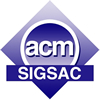Tutorials
Global Navigation Satellite Systems
Pau Closas, Northeastern UniversityAbstract. Global Navigation Satellite Systems (GNSS) is the technology of choice for most position-related applications, when it is available. A GNSS receiver relies on a constellation of satellites to estimate a set of range measures from which to compute its position. These distances are calculated estimating the propagation time that transmitted signals take from each satellite to the receiver. The term GNSS encompasses GPS, Galileo, GLONASS, or Beidou systems among others. The main challenges of GNSS technology arise when operating in complex environments which are either naturally impaired by multipath, shadowing, high dynamics, or ionospheric scintillation; or intentionally/unintentionally interfered. In the last decade, ushered by an ever increasing demand for availability, accuracy, and reliability, the mitigation of these challenges has steered intense research on advanced receiver design. The main goal of this tutorial is to introduce the GNSS landscape and, motivated by its widespread use, highlight the need for securing and protecting GNSS infrastructure. The main threats and sources of interferences are classified, along with their impact on various stages of a GNSS receiver. Finally, the tutorial will conclude with an overview of the GNSS-SDR project (gnss-sdr.org), a free and open-source software implementing an end-to-end GNSS receiver.

Important Dates
- Abstract submission: March 27, 2017 (11:59:59 PM EDT) [Open until Paper Deadline]
- Paper submission: March 27, 2017 (11:59:59 PM EDT) [Hard Deadline]
- Notification to authors: May 1, 2017
- Poster and demo proposal submission: June 2, 2017
- Camera-ready version: May 29, 2017
- WiSec 2017: July 18 to July 20, 2017
Sponsored by
ACM WiSec 2017
10th ACM Conference on Security
and Privacy in Wireless and
Mobile Networks
Boston, USA
July 18 - 20, 2017








